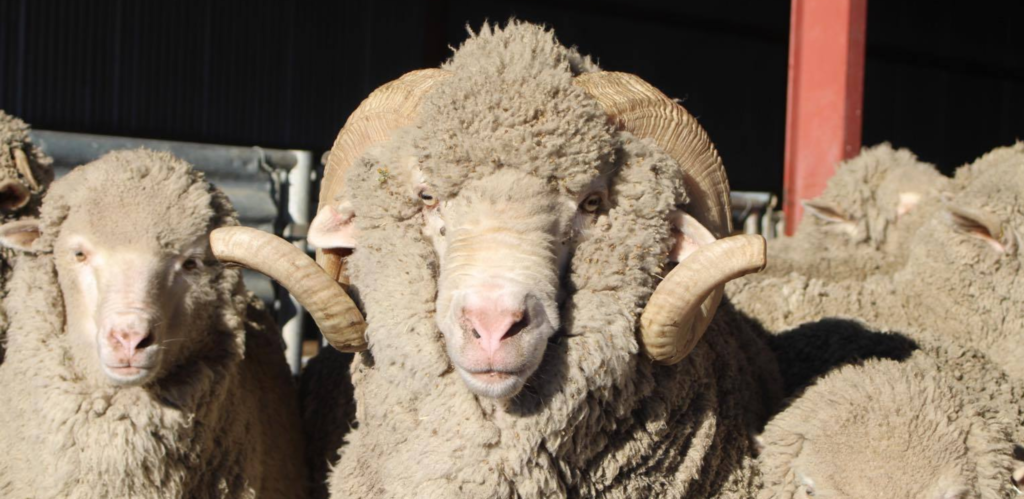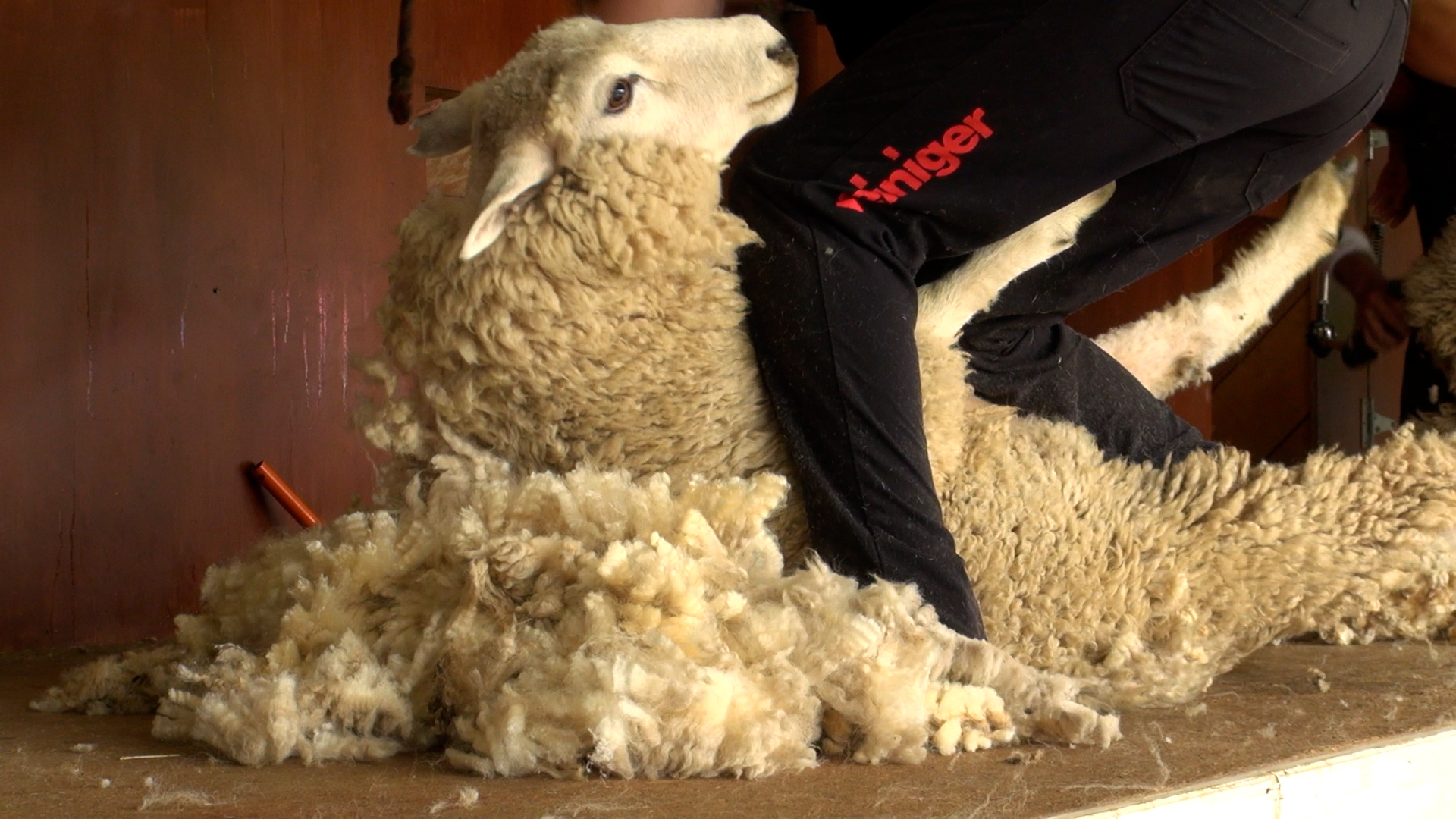
A couple of minutes of surprise
and bewilderment

By Hugh de Lacy (snr)
September 26, 2022
Shearing is an indispensable animal welfare practice, without which domesticated sheep would die from starvation – or worse.
Mankind has been selectively breeding sheep to produce wool for ten thousand years, succeeding to the degree that the wool on domesticated sheep no longer sheds itself annually, but instead keeps growing more or less non-stop. As a result, the fleece eventually becomes so heavy that the sheep can no longer stand or walk to forage.
Lying down it becomes “cast” (unable to get up again), and starves – or worse. “Worse” is the high likelihood of the cast sheep attracting blowflies, whose maggots eat the starving animal alive.

Studs: Check them out here at Wairua Merino, a key sponsor of the Waimate Shears.

Best practices: Way better than being plucked.
There are about a billion domesticated sheep on the planet, and all but a few specialist meat breeds have to be shorn at least annually to ensure their survival. That said, shearing cannot be other than a frightening, stressful and potentially dangerous experience for the sheep, which is why it needs to be performed with the utmost speed and care.
That’s also why shearing competitions are integral to the welfare of sheep: best practices are developed and honed as events create an environment in which shearers compete to remove the fleece without physical damage to the sheep, and in the shortest possible time.
Shearing today is a far cry from the stressful environment in which used to be shorn. Originally the wool from plucked from the sheep, which must have been painful for the animal.
Over the centuries steel shears were developed to cut the wool off, but by the early nineteenth century the process still took at least half an hour, with the sheep trussed up the whole time, and often two or more shearers working on it simultaneously.
When the huge sheep stations of Australia, and later in New Zealand, began to be populated with millions of sheep during that century, shearing became a bottleneck in the wool production process that station owners were desperate to crack open. The only way it could be done was by producing faster shearers and better shears.
By the second half of the century, spring-loaded hand-shears were developed that, largely unchanged, are still in use today in many parts of the world.
Shearing speeds picked up dramatically as shearers became near-year-round professionals rather than seasonal workers temporarily seconded from farm staff.
Top shearers were now pumping sheep out at the rate of one every five minutes, or faster, and this pace picked up again following the invention of mechanical shearing machines at the turn of the century.
The emergence of regular shearing competitions in New Zealand, and later Australia, from the late 1860s were intended to – and succeeded – in incentivising shearers to pursue ever-higher tallies and ever-decreasing stress on the sheep.
Today, as the wool industry enters a new era where its sustainability in the face of global warming is making it ever-more attractive to manufacturers, shearers are routinely fleecing 300 sheep in an eight-hour day, and record tallies top 700.
Accordingly, what was once a dangerous, protracted and terrifying experience for the sheep is reduced to a couple of minutes of surprise and bewilderment – after which it’s all over for another year.
